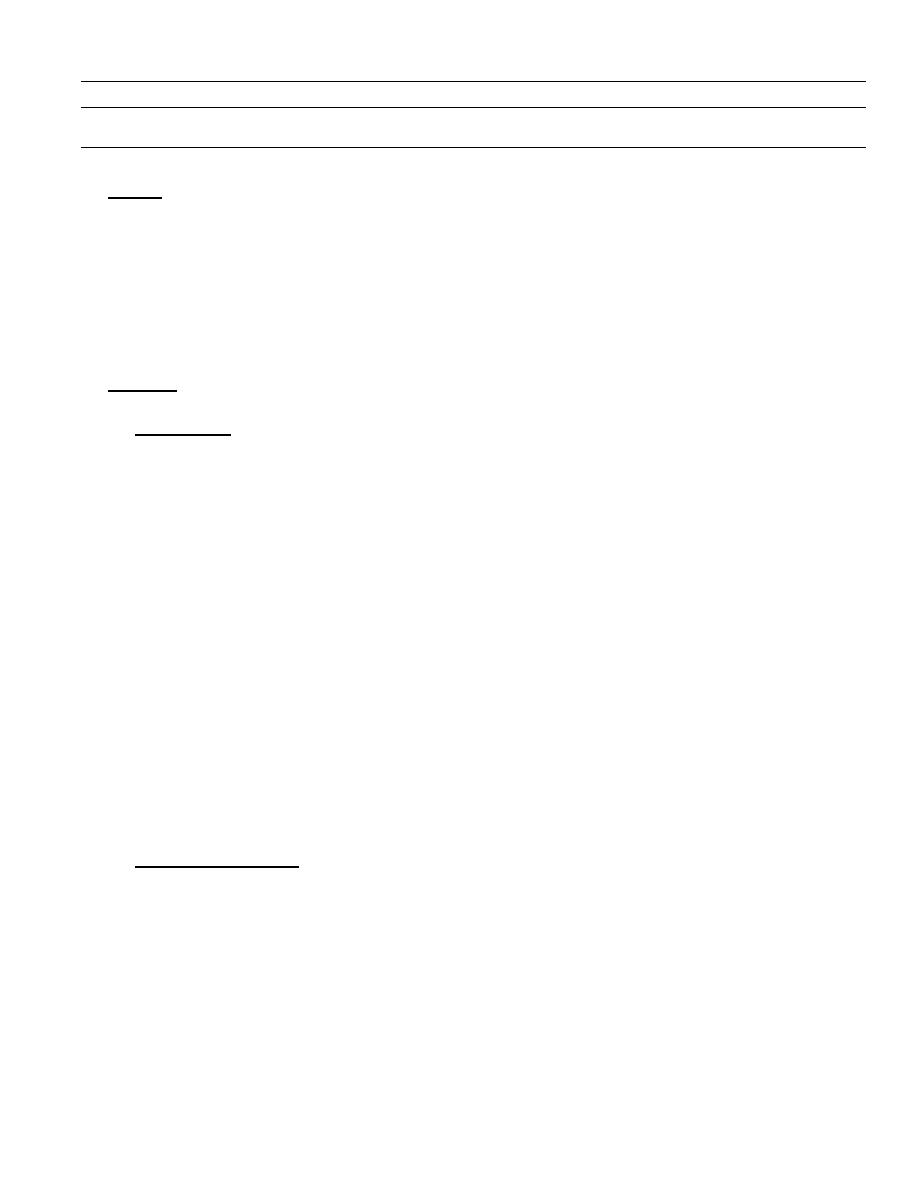 |
|||
|
|
|||
|
|
|||
| ||||||||||
|
|
 TM 9- 2990- 205- 34&P
-
-
-
TROUBLESHOOTING INSTRUCTIONS
THIS WORK PACKAGE COVERS:
Troubleshooting Instructions and Malfunction/Corrective Action Table
TROUBLESHOOTING INSTRUCTIONS
1. General. The instructions and information in this section apply to defective turbosuperchargers once they have
been removed from the engine.
a. When the malfunction is known, use the inspection procedures to make sure the diagnosis is correct and to
determine if there are further problems with the turbo not indicated on the repair tag.
b. When the malfunction is not known, use the inspection procedures to detect and identify the problem. The
inspection is particularly important in this case because it is often the only available way of finding out what is
wrong without completely disassembling the turbo.
c.
When you have identified all the problems with a defective turbosupercharger, then use the Troubleshooting
Guide, Table 2--1, to find out the probable causes and corrective actions.
2. Inspection. Upon receipt, you should thoroughly inspect and check the defective turbosupercharger according to
the following procedures.
a. Visual Checks. Visually inspect the turbo for:
1) Stripped, damaged or missing studs.
2) Cracked or broken mounting legs; cracked, bent or restricted oil drain tube.
3) Cracked or damaged compressor cover, turbine housing, or bearing housing.
4) Damaged or eroded (worn) compressor wheel blades.
NOTE
If compressor wheel blades are worn, look for dust or sand in the compressor housing inlet or
outlet openings.
5) Peened or feathered edges on compressor wheel or turbine wheel blade tips.
6) Compressor wheel or turbine wheel which does not turn freely when spun by hand.
7) Excess oil in the compressor cover or turbine housing.
NOTE
A trace of oil in these areas is normal. During long periods of idling or under certain peak ac-
celeration conditions, some oil may pass through the seals. However, this normal leakage is
small, and will not affect the oil consumption rate. Also, heavy oily soot deposits in the turbine
housing or on the turbine wheel are usually caused by improper engine operation or engine
malfunction.
b. Check Radial Movement. Radial movement is the motion of the rotor shaft laterally in the bore of the bearing
housing. Too much radial movement can cause the compressor wheel and turbine wheel to rub against their
respective housings. Check radial movement by performing the following steps.
1) Visually check the compressor cover outlet for excessive lubricating oil.
2) Push both wheels laterally in opposite directions, and visually check to ensure that there is clearance
between the compressor wheel and the compressor cover at the extreme radial movement.
3) Check to ensure that there is clearance between the turbine wheel and the turbine housing at the extreme
radial movement.
4) Repeat steps (2) and (3) at 90 degree intervals around the shaft.
5) If there is no significant evidence of lubricating oil at the compressor cover outlet, and there is visual
clearance between the compressor and turbine wheels and their respective housing, and the wheels turn
freely when spun by hand, the turbo is approved for service with regard to radial movement.
|
|
Privacy Statement - Press Release - Copyright Information. - Contact Us |